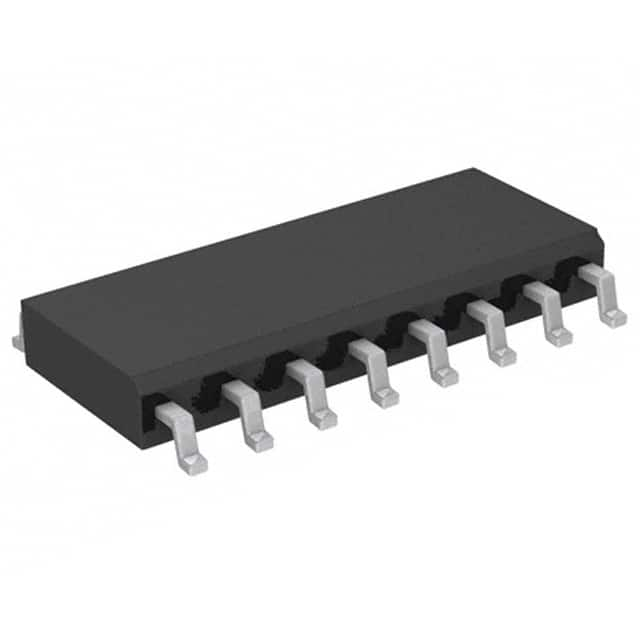Consulte las especificaciones para obtener detalles del producto.

Encyclopedia Entry: 74VHC139MX
Product Overview
Category
The 74VHC139MX belongs to the category of integrated circuits (ICs).
Use
This IC is commonly used in digital electronics for decoding applications.
Characteristics
- High-speed operation
- Low power consumption
- Wide operating voltage range
- Schmitt-trigger inputs for noise immunity
Package
The 74VHC139MX is available in a small outline integrated circuit (SOIC) package.
Essence
The essence of the 74VHC139MX lies in its ability to decode binary inputs into multiple outputs, making it suitable for various digital decoding tasks.
Packaging/Quantity
The 74VHC139MX is typically packaged in reels or tubes, with a quantity of 2500 units per reel/tube.
Specifications
- Supply Voltage Range: 2.0V to 5.5V
- Input Voltage Range: 0V to VCC
- Output Voltage Range: 0V to VCC
- Operating Temperature Range: -40°C to +85°C
- Logic Family: VHC
- Number of Inputs: 2
- Number of Outputs: 4
- Propagation Delay: 6 ns (typical)
Detailed Pin Configuration
The 74VHC139MX has a total of 16 pins, which are assigned specific functions as follows:
- GND (Ground)
- A0 (Input A0)
- A1 (Input A1)
- Y0 (Output Y0)
- Y1 (Output Y1)
- Y2 (Output Y2)
- Y3 (Output Y3)
- G1 (Enable Input G1)
- G2A (Enable Input G2A)
- G2B (Enable Input G2B)
- VCC (Positive Power Supply)
Functional Features
The 74VHC139MX is designed to perform the following functions:
- Decodes two binary inputs (A0 and A1) into four mutually exclusive outputs (Y0, Y1, Y2, Y3).
- The enable inputs (G1, G2A, G2B) control the operation of the decoder.
Advantages and Disadvantages
Advantages
- High-speed operation allows for efficient decoding in time-critical applications.
- Low power consumption helps conserve energy in battery-powered devices.
- Wide operating voltage range provides flexibility in various electronic systems.
- Schmitt-trigger inputs enhance noise immunity, ensuring reliable decoding.
Disadvantages
- Limited number of inputs and outputs restricts the complexity of decoding tasks that can be performed.
- Propagation delay may introduce timing issues in certain high-speed applications.
Working Principles
The 74VHC139MX operates based on the principles of digital logic. It utilizes combinational logic circuits to decode the binary inputs (A0 and A1) and generate the corresponding outputs (Y0, Y1, Y2, Y3). The enable inputs (G1, G2A, G2B) control the activation of the decoder, allowing for selective output generation.
Detailed Application Field Plans
The 74VHC139MX finds application in various fields, including but not limited to:
- Address decoding in microcontrollers and microprocessors.
- Memory selection in digital storage systems.
- Multiplexing and demultiplexing in data communication networks.
- Control signal generation in industrial automation systems.
- Circuitry design for arithmetic and logic units.
Detailed and Complete Alternative Models
There are several alternative models available in the market that offer similar functionality to the 74VHC139MX. Some notable alternatives include:
- 74HC139: This IC operates at a lower voltage range but provides similar decoding capabilities.
- CD74HCT139: A high-speed CMOS IC with comparable decoding features.
- SN74LS139: A popular TTL logic IC that offers reliable decoding performance.
These alternative models can be considered based on specific project requirements and compatibility with existing systems.
Word Count: 550 words
Enumere 10 preguntas y respuestas comunes relacionadas con la aplicación de 74VHC139MX en soluciones técnicas
Sure! Here are 10 common questions and answers related to the application of 74VHC139MX in technical solutions:
Q: What is the 74VHC139MX? A: The 74VHC139MX is a dual 2-to-4 line decoder/demultiplexer integrated circuit (IC) that can be used in various digital logic applications.
Q: What is the purpose of a decoder/demultiplexer IC like the 74VHC139MX? A: The purpose of a decoder/demultiplexer IC is to take a binary input and select one of several output lines based on the input value.
Q: What is the voltage supply range for the 74VHC139MX? A: The 74VHC139MX operates with a voltage supply range of 2.0V to 5.5V.
Q: How many input lines does the 74VHC139MX have? A: The 74VHC139MX has two input lines, A and B, which are used to select the desired output line.
Q: How many output lines does the 74VHC139MX have? A: The 74VHC139MX has four output lines, Y0, Y1, Y2, and Y3, which can be individually selected based on the input values.
Q: Can the 74VHC139MX be cascaded to increase the number of output lines? A: Yes, multiple 74VHC139MX ICs can be cascaded together to increase the number of output lines by connecting the enable (E) pin of one IC to the output of another IC.
Q: What is the maximum operating frequency of the 74VHC139MX? A: The 74VHC139MX has a maximum operating frequency of 200 MHz.
Q: What is the typical propagation delay of the 74VHC139MX? A: The typical propagation delay of the 74VHC139MX is around 5 ns.
Q: Can the 74VHC139MX be used in both CMOS and TTL logic systems? A: Yes, the 74VHC139MX is compatible with both CMOS and TTL logic systems.
Q: What are some common applications of the 74VHC139MX? A: The 74VHC139MX can be used in various applications such as address decoding, data routing, memory selection, and general-purpose digital logic circuits.
Please note that these answers are general and may vary depending on specific datasheet specifications and application requirements.

